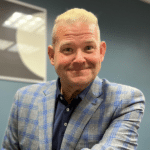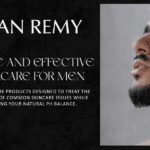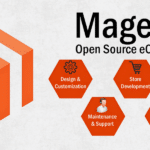By: Chiara Accardi
Have you ever found yourself surrounded by success yet feeling a persistent void within? Many high achievers encounter this paradox, and Paula Doroff, a Life Design Strategist, Coach, and Empowerment Speaker, is no stranger to this feeling. Growing up in poverty in Brazil and overcoming immense challenges, Paula ascended to the heights of corporate America, holding vice president positions at Wall Street’s prestigious firms like Goldman Sachs and BlackRock. Despite her impressive achievements, she felt an insistent call for something more meaningful.
Paula’s story is one of resilience and transformation. She climbed mountains, both literal and figurative, and discovered her true calling beyond the confines of corporate success. By leveraging her life experiences, Paula now dedicates herself to helping others design lives filled with purpose and fulfillment. In this feature, we delve into Paula’s incredible journey, her coaching philosophy, and how she guides her clients to summit their own mountains. Let’s explore her insights and strategies to understand how you can create the life you truly desire.
1. Career transitions can be emotionally taxing and filled with uncertainty. How do you help your clients navigate the emotional aspects of career transitions and manage their fears of the unknown?
Career transitions are emotionally challenging, so I take a structured approach to help my clients navigate them. First, we focus on clarifying their goals and identifying the fears or uncertainties holding them back. By understanding who they are at their core, we create a foundation of confidence. Then, I guide them through a step-by-step plan, breaking the transition into manageable actions with clear milestones. This reduces the feeling of being overwhelmed and allows them to process emotions while moving forward with clarity and purpose. Ultimately, I help them use their fears as a catalyst for growth, moving forward even when the path ahead isn’t fully clear.
2. Stress management is crucial during times of change. What specific techniques or methods do you recommend to your clients for managing and reducing stress during significant life transitions?
During times of transition, I encourage my clients to think of stress management as part of their overall strategy for success. One key technique is prioritization. We focus on identifying the tasks and decisions that will have the greatest impact on their goals, allowing them to channel their energy into what truly matters. This reduces the feeling of being pulled in too many directions.
I also introduce clients to the concept of strategic ‘recovery periods.’ These are intentional breaks built into their schedule—periods of time where they step away to recharge mentally, ensuring that when they return to their work or challenges, they can perform at their best. We align these with their natural energy cycles to maximize productivity and minimize burnout.
Lastly, I help them reframe stress itself as a signal. Instead of seeing it as a burden, they learn to view it as an indicator of growth, a sign that they’re stepping into new territory. This mindset shift helps reduce the emotional weight of stress and keeps them focused on long-term results.
3. Resilience and motivation are essential for long-term success. How do you support your clients in developing resilience and maintaining motivation throughout their journey towards achieving their goals?
To build resilience and maintain motivation, I focus on three key strategies. First, we establish a ‘resilience framework’ by aligning clients’ daily actions with their core values and long-term vision, providing a strong foundation during tough times.
Second, I implement ‘progress checkpoints’—regular reviews where clients can celebrate achievements, assess progress, and adjust strategies. This keeps motivation high and helps them stay resilient by recognizing their successes and recalibrating as needed.
Lastly, we create a personalized ‘resilience toolkit’—a set of strategies tailored to their needs, such as stress management techniques and building supportive networks. This toolkit helps clients adapt and bounce back from setbacks, ensuring they stay motivated throughout their journey.
Together, these methods create a structured yet flexible approach to overcoming challenges and staying focused on their goals.
4. Setting boundaries is vital for maintaining balance and well-being. How do you guide your clients in identifying and establishing healthy boundaries in their personal and professional lives?
Setting healthy boundaries is essential for balance and well-being. I begin by helping clients identify their core values and priorities to pinpoint where boundaries are needed. We then define actionable boundaries and practice assertive communication to express them clearly.
To support this process, I encourage clients to use a tool I call the ‘Boundary Reflection Journal.’ In this journal, they regularly record situations where boundaries were tested and reflect on how they handled them. Additionally, I ask clients to regularly consider the question: ‘Are my boundaries aligning with my core values and priorities?’
We also implement a system of ongoing reflection with regular check-ins, allowing clients to evaluate and adjust their boundaries as needed. This approach ensures boundaries remain effective, supportive, and aligned with their goals.
5. Many people feel overwhelmed by the demands of modern life. What strategies or practices do you suggest for managing this feeling of overwhelm and creating a more balanced life?
Managing the feeling of overwhelm and creating a balanced life requires a strategic approach that integrates both mindset and practical tactics. For executives, I recommend focusing on three core strategies:
- Strategic Prioritization: Start by conducting a thorough assessment of your tasks and responsibilities. Use tools like the Eisenhower Matrix to categorize tasks based on urgency and importance. This helps prioritize high-impact activities and delegate or defer less critical ones, reducing cognitive overload.
- Systematic Time Management: Implement a structured scheduling system that allocates specific time blocks for strategic thinking, decision-making, and personal well-being. Techniques such as time blocking and the Pomodoro Technique can enhance productivity while ensuring you reserve time for rest and recovery.
- Integrated Self-Assessment: Regularly engage in self-assessment to reflect on your goals and stress levels. I recommend using a ‘Personal Balance Dashboard,’ where you track key metrics such as work-life integration, energy levels, and achievement of personal and professional milestones. This tool provides actionable insights to adjust your strategies and maintain equilibrium.
By combining these methods, executives can manage overwhelm and foster a more balanced and effective approach to their professional and personal lives. This strategic framework enhances performance and supports sustained well-being and success.
Published By: Aize Perez



















